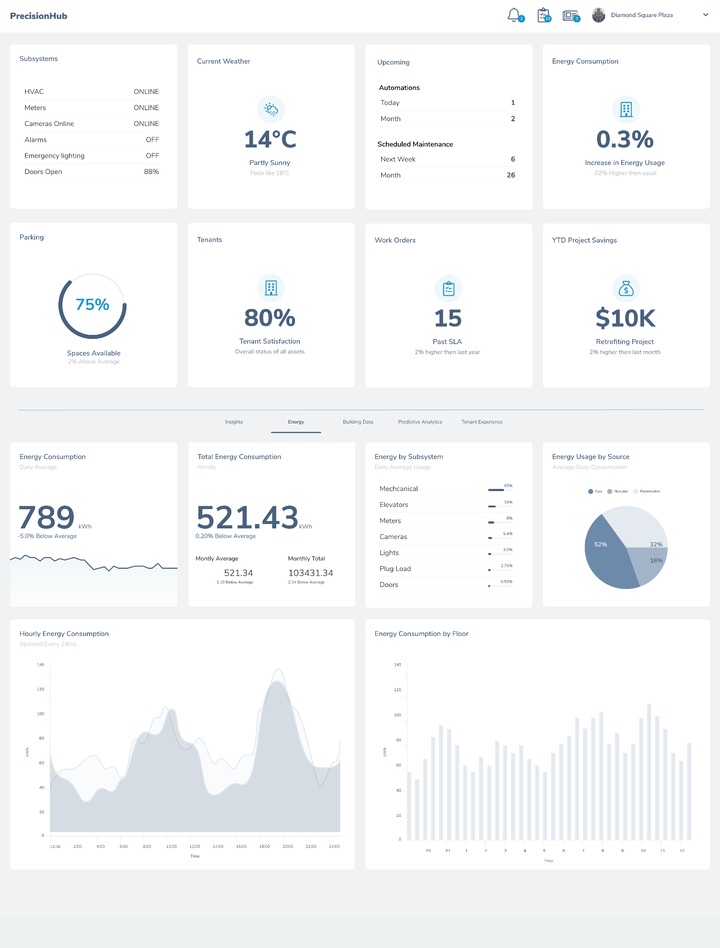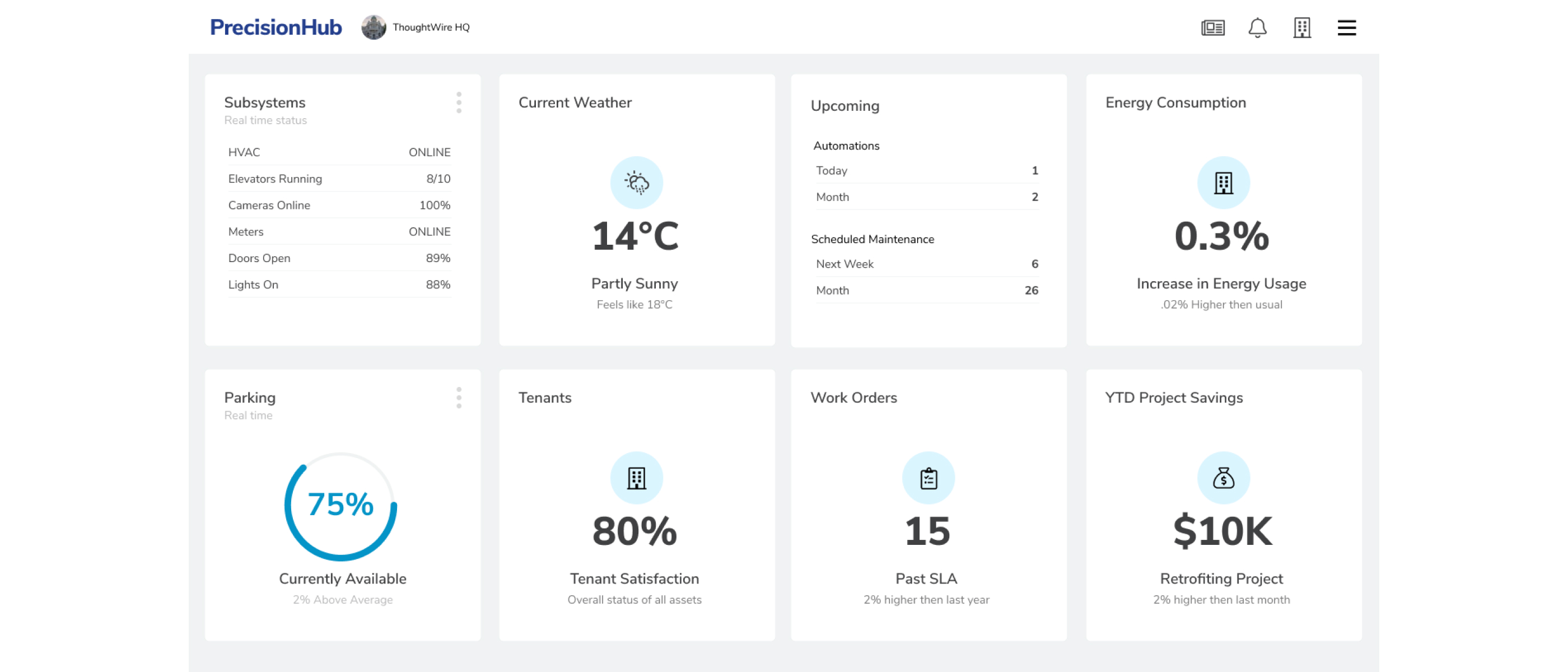
Case Study: Insights Platform
Managing a commercial building can be complex and daunting, with multiple subsystems and sensors to monitor, control, and maintain. Building operators need access to real-time data to make informed decisions and ensure smooth operations.
The Management Services application provides a centralized command center that controls and collects data from various subsystems and sensors throughout the building.
In this case study, we will explore how the Management Services application revolutionized building management for commercial property, providing a comprehensive solution for building operators to manage their facilities quickly and efficiently.
Problem Statement
We aimed to give building owners and occupants greater control over their space. Initially, we developed a straightforward proof of concept that was only functional in a single space within a building. However, to become trailblazers in the industry, it was imperative that our platform could scale.
To gain insight into our user base, we invited Portfolio Managers, Property Managers, and Office Workers to utilize our applications and complete various tasks. The interviews with these users yielded a collection of comments, some of which are presented below.
"I can see data in real time about my building, this is really cool!"
"The system is hard to navigate, I keep clicking the logo to return to the dashboard - it doesn't work! I had to use the back button."
"The elevation view is really cool, its to bad I didn't see it until I was shown!"
Meet the team
The team comprised a Director of Product, Product Manager, myself, a Senior Product Designer, and a Senior Data Analyst. We collaborated closely with the CTO and a team of engineers.
Tools
I used Balsamiq to create wireframes, while Whimsical was employed for user flows and diagrams. Figma was used to develop mockups, prototypes, and style guides for mobile and desktop applications. Illustrator was the software of choice for creating icons and other SVG graphics. HTML, CSS & JavaScript were utilized for more advanced prototyping and demos. A style guide and a data visualization theme were developed for SuperSet.
Discovery
Our research revealed that Portfolio Managers needed more visibility and insight into their assets. At the same time, Property Managers were logging into multiple applications to monitor, manage, and maintain their facilities.
Personas
The product was aimed at a diverse audience ranging from Portfolio Managers who manage multiple assets to Facility Managers in charge of a single building. It was designed to enhance operational workflows and optimize the tenant experience.
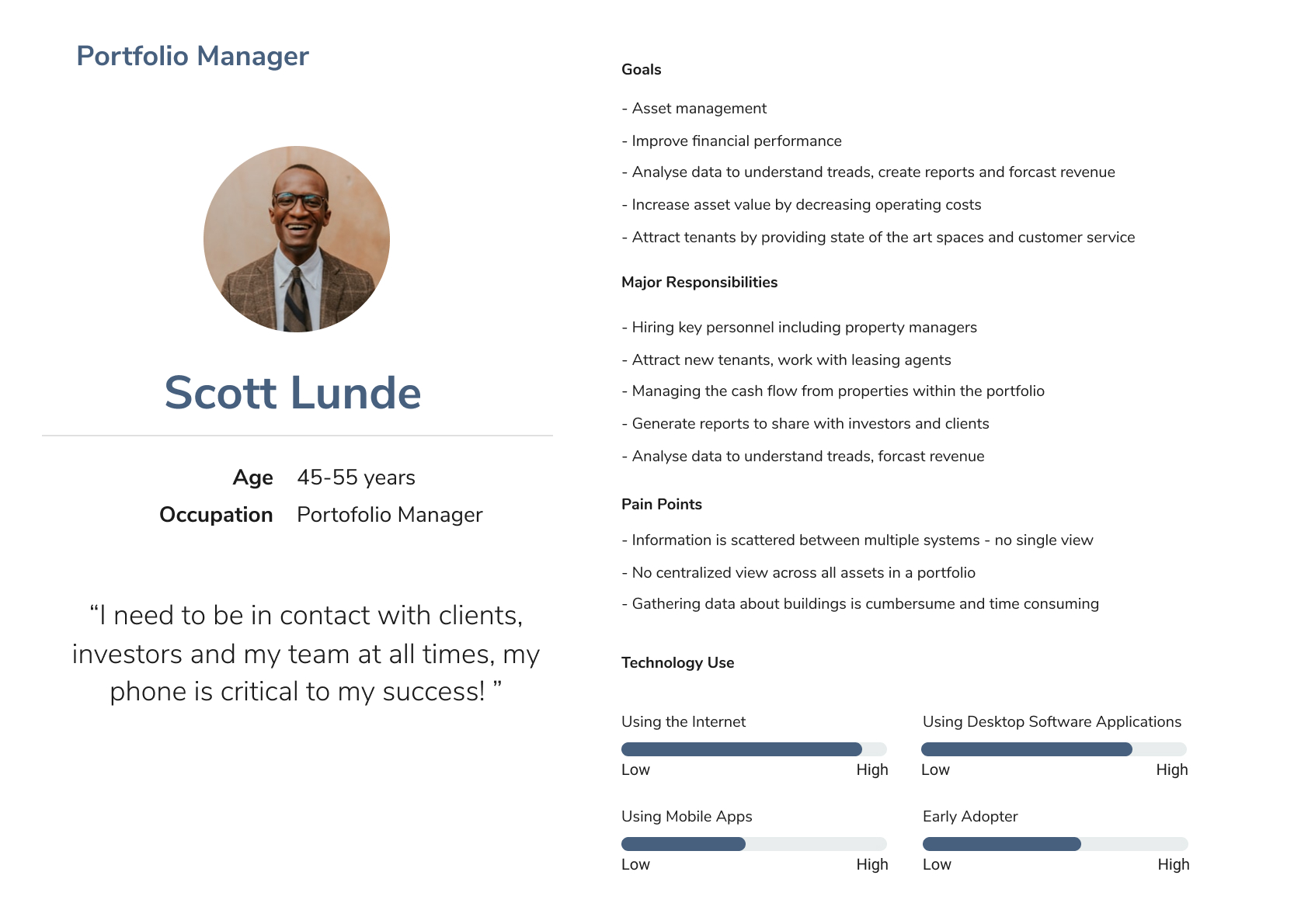
Portfolio Manager Scott Lunde
Meet Scott, a portfolio manager for a leading enterprise building management company. With a keen eye for detail and a passion for financial performance, Scott manages a portfolio of properties on behalf of the company's investors.
Their primary goal is to increase the value of the buildings they manage by reducing operating costs and attracting new tenants and leasing agents. Scott is adept at hiring key personnel, such as property managers and maintenance staff, who can help achieve these goals.
They work tirelessly to promote the buildings and highlight their unique features and benefits to attract new tenants and leasing agents. Scott is always up-to-date with industry trends and best practices, which enables them to make informed decisions about managing the portfolio of properties effectively.
Their success is measured by the financial performance and asset value of the buildings under their management, which they constantly strive to improve. Scott's strong work ethic, attention to detail, and dedication to financial performance have earned them a reputation as a top-performing portfolio manager in the enterprise-building management industry.
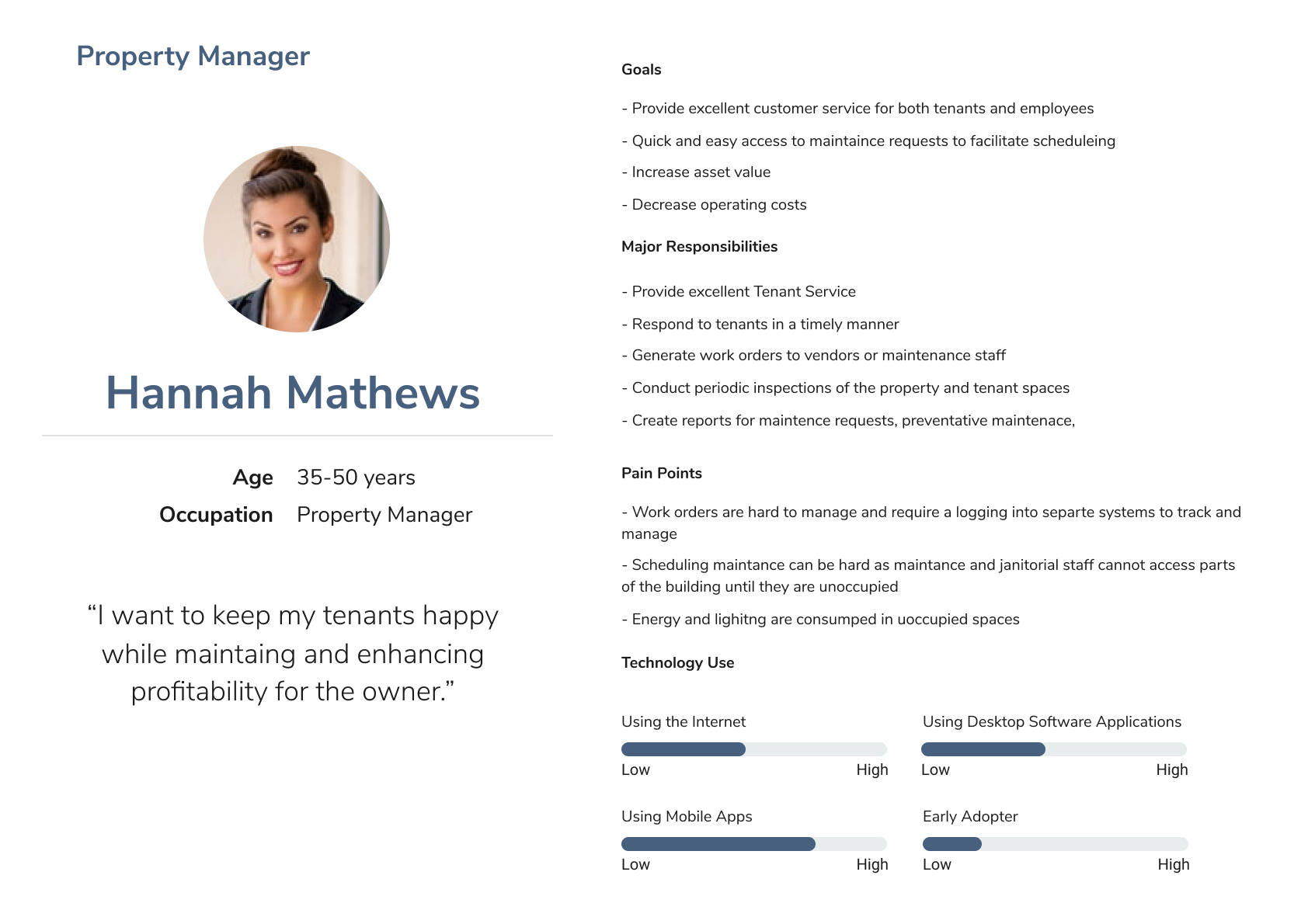
Property Manager Hannah Mathews
A portfolio manager for enterprise buildings is responsible for managing properties on behalf of the company's investors. The portfolio manager's primary goal is to improve financial performance by increasing the value of the buildings they manage.
Through various means, such as decreasing operating costs, attracting new tenants, and leasing agents. By reducing expenses and increasing revenue, the portfolio manager can increase the asset value of the buildings they manage and improve financial performance for the company's investors.
One key responsibility of the portfolio manager is to hire key personnel, such as property managers and maintenance staff, who can help to achieve these goals. They must also work to attract new tenants and leasing agents by promoting the buildings and highlighting their unique features and benefits.
Additionally, they must stay up-to-date with industry trends and best practices to make informed decisions about managing the portfolio of properties. Ultimately, the success of a portfolio manager for enterprise buildings is measured by the financial performance and asset value of the buildings under their management.
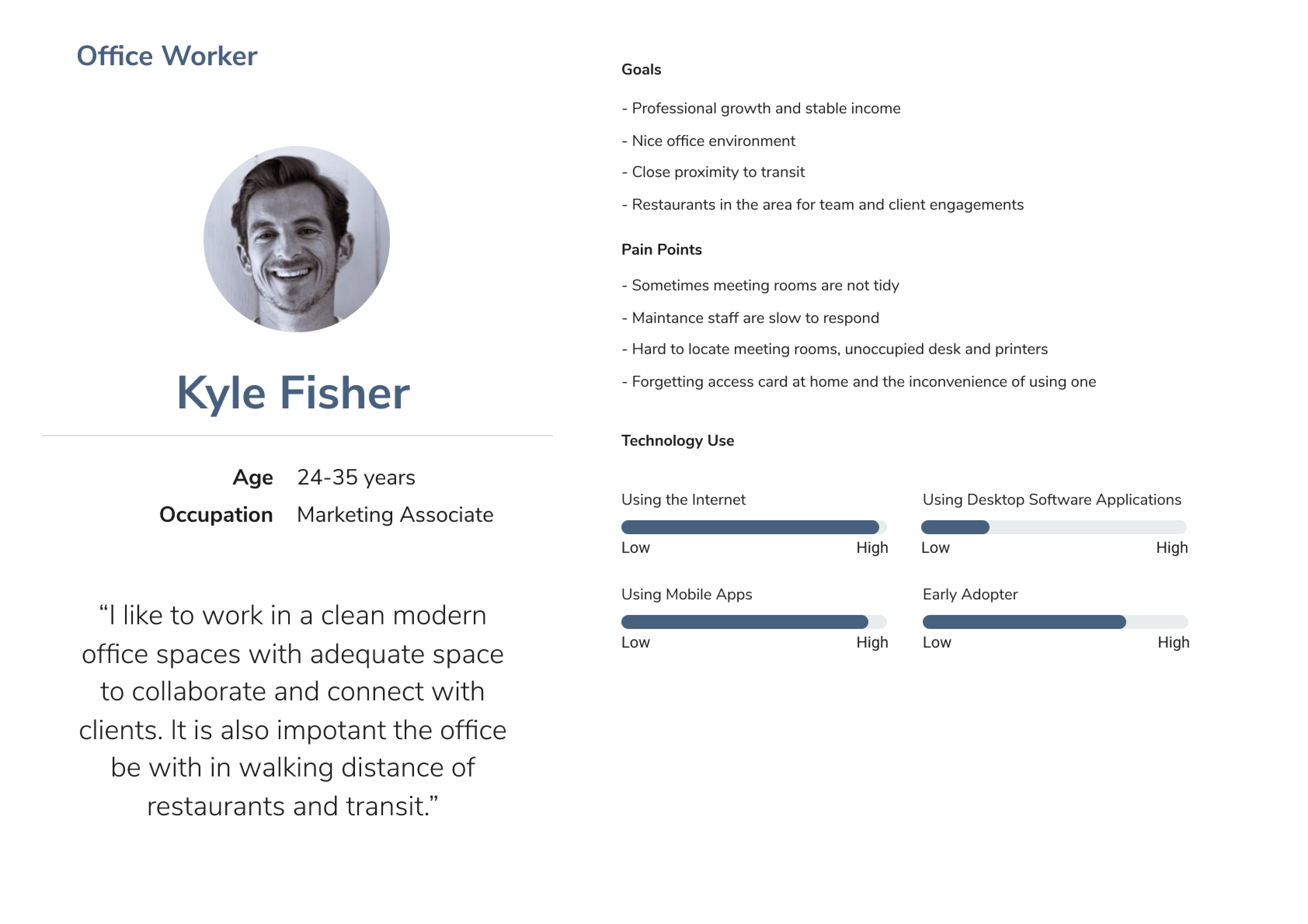
Office Worker Kyle Fisher
Kyle Fisher is a 28-year-old marketing specialist who works at a fast-growing tech company. He is motivated and ambitious, and his primary goal is to advance in his career and take on more challenging responsibilities.
Kyle values a nice office environment and believes a clean, comfortable workplace can boost productivity and creativity. He expects the building management to provide excellent tenant service, and he wants to feel that his needs are being addressed promptly and professionally.
However, Kyle's pain points are untidy meeting rooms, which he finds distracting and unprofessional, and slow maintenance staff, which can disrupt his work schedule and affect his productivity. Despite these challenges, Kyle is a hardworking, detail-oriented, and analytical individual who takes pride in his work and is committed to his job.
Onboarding & Energy Consumption: User Journeys for Portfolio and Property Managers
We developed user journeys to gain deeper insights into the needs of portfolio and property managers. One of the journeys examined the user onboarding experience, specifically focusing on how Property Managers navigate the onboarding process for the first time. Another journey explored how Property Managers can utilize the application to manage energy consumption by monitoring critical notifications and maintenance needs across multiple facilities or in a single building in real time.
The journey commences with onboarding, configuring alerts and notifications, connecting the meters to the platform, and setting up the application. Once the managers complete onboarding, they can access the insights dashboard, which gives a detailed view of patterns across various properties. rates the latter.
The dashboard enables managers to monitor energy consumption in real-time, track changes over time, set energy-saving goals, and track progress toward achieving those goals. The application alerts the managers if there are any anomalies, enabling them to take immediate corrective action.
Overall, this journey map provides portfolio and property managers with a comprehensive solution to efficiently manage energy consumption, reduce costs, and minimize their carbon footprint.
Onboarding
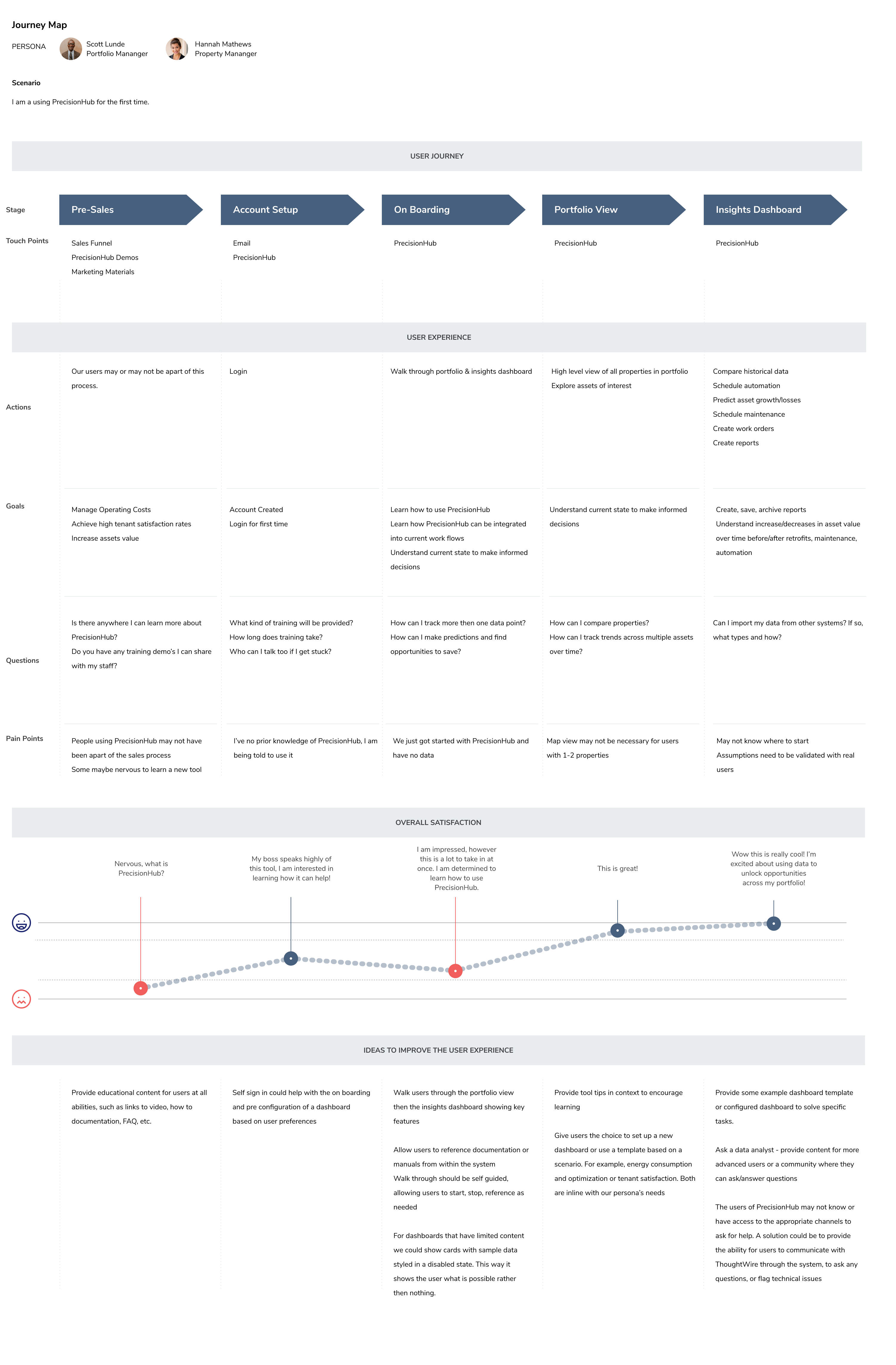
Energy Consumption
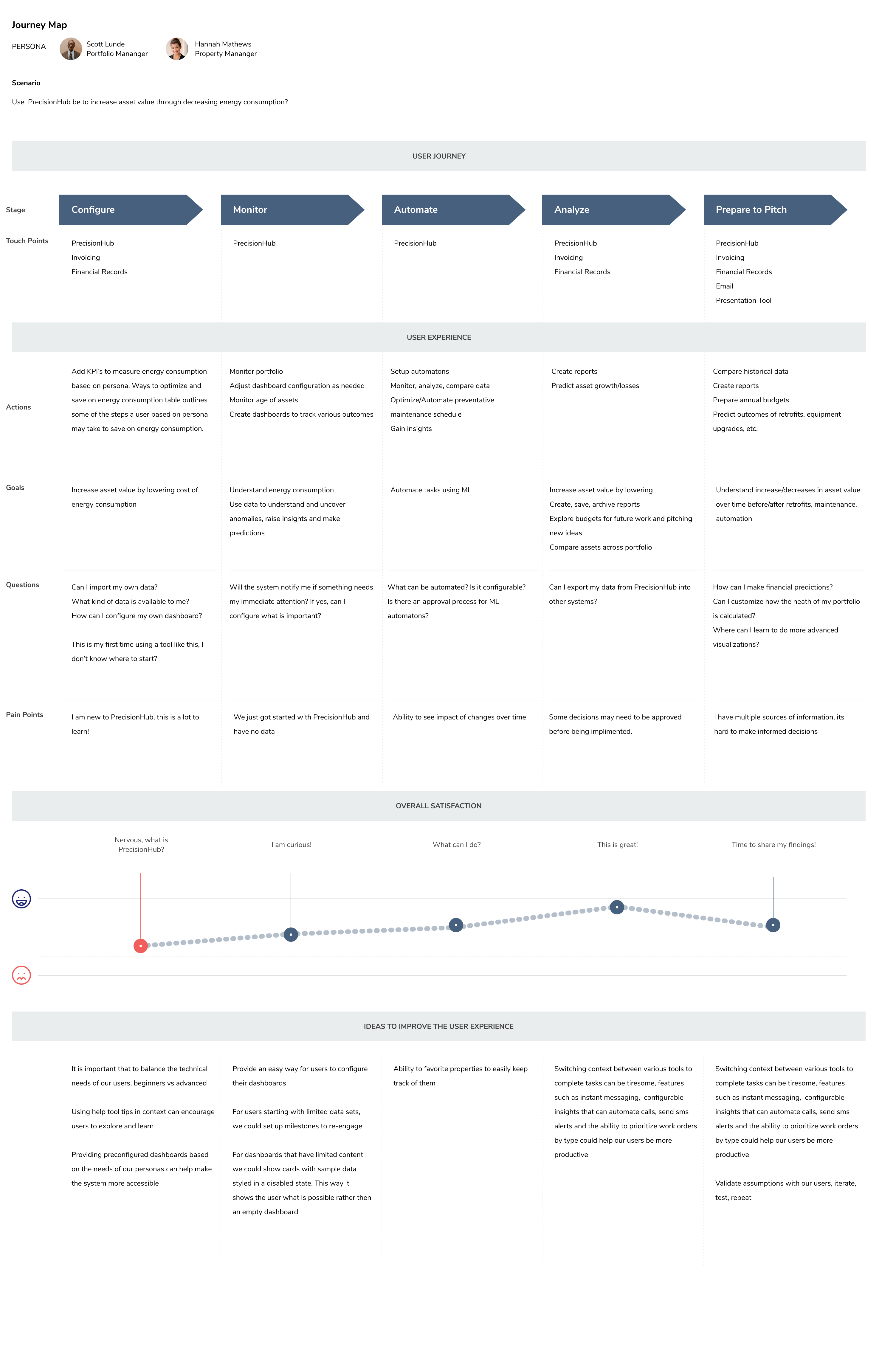
Early Concept: Low Fidelity Wireframe of the Insights Dashboard
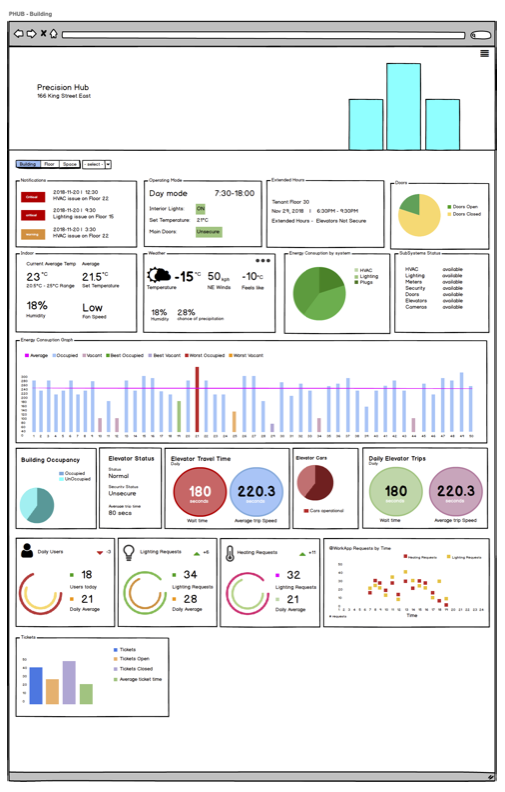
MVP: Insights Dashboard
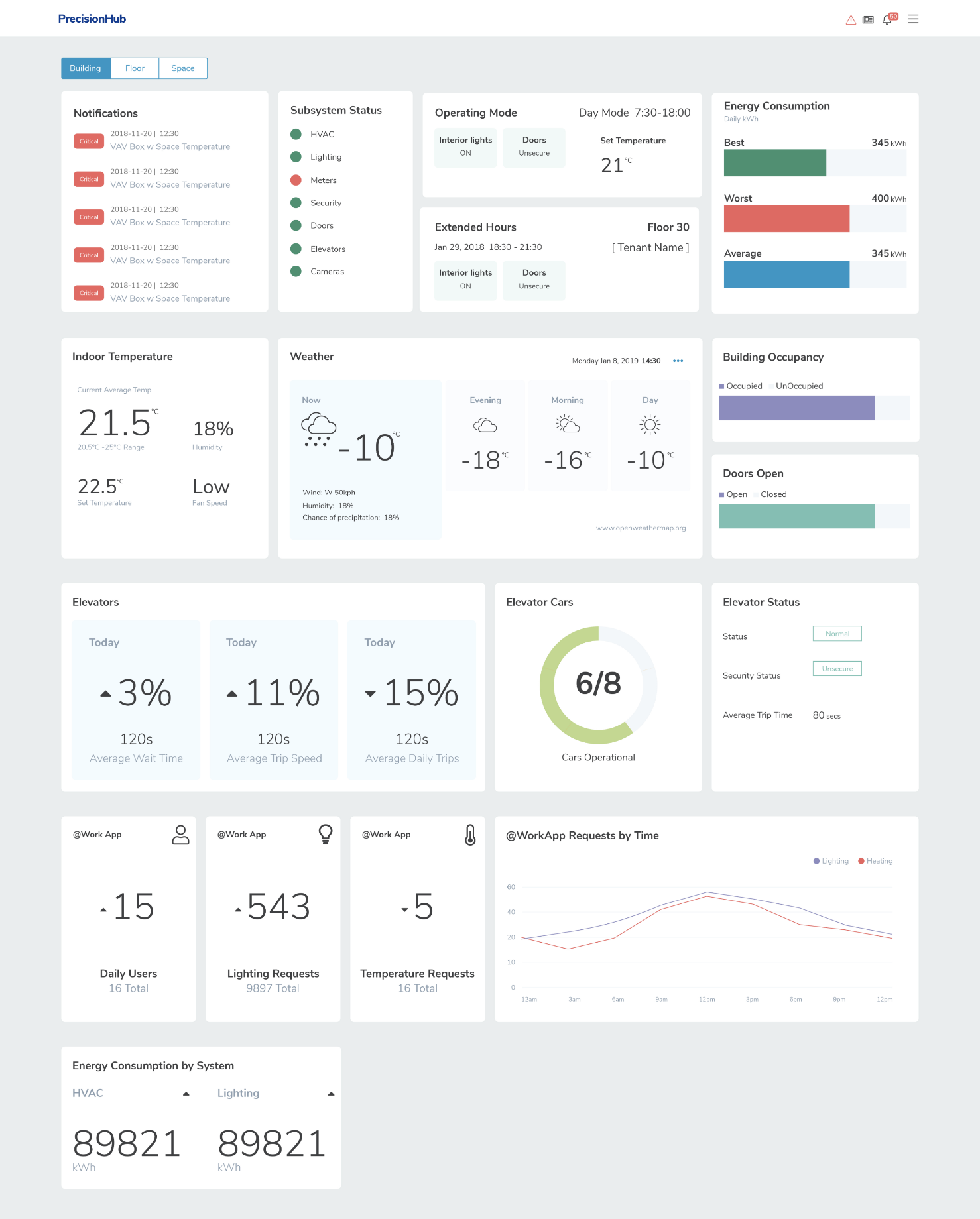
Portfolio View
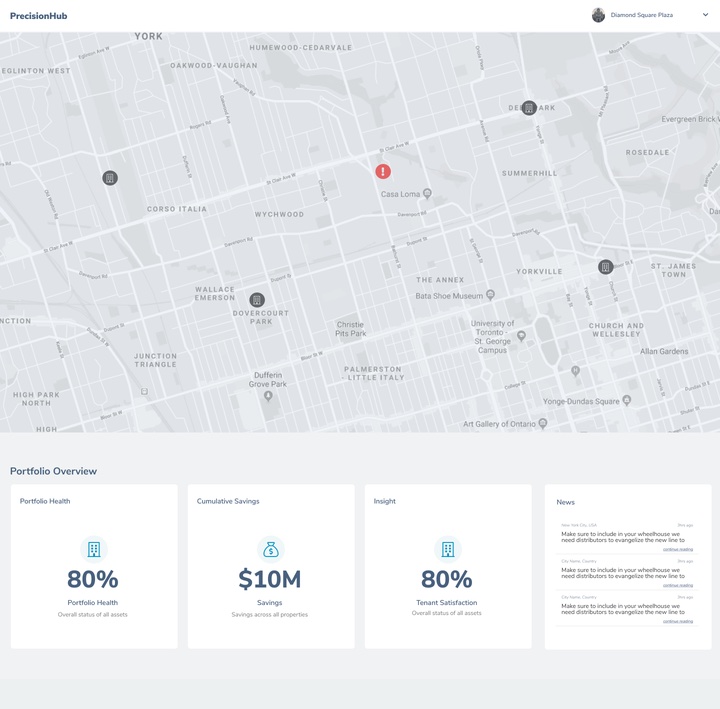
Insights Dashboard
